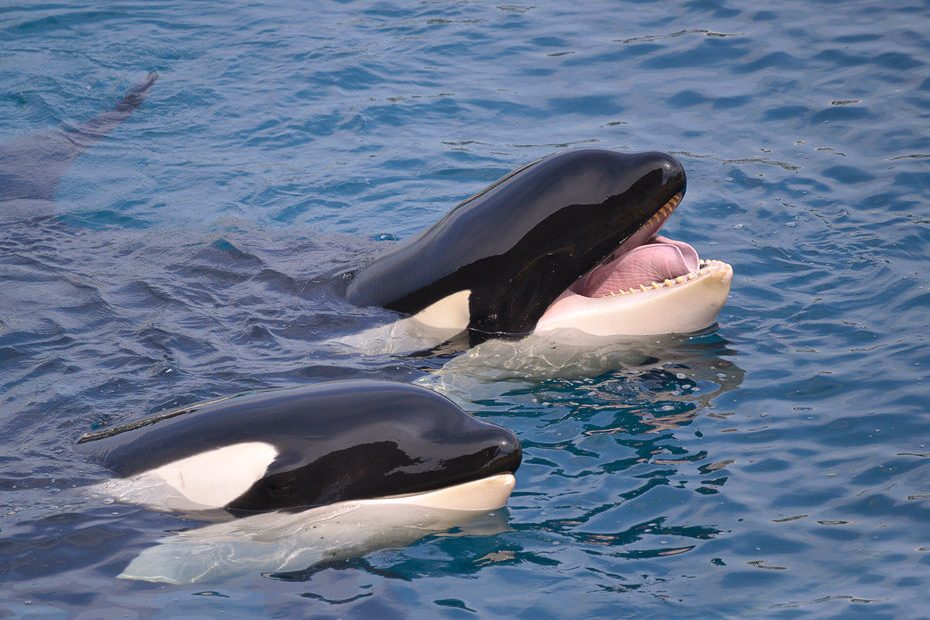Orcas have gone viral recently after numerous reports of them sinking boats off the coast of Europe. Some speculate these attacks are the revenge plot of an orca that was injured by a boat, while others suspect orcas are mischievously attacking ships for fun. Whatever the motivation, it is clear that orcas have been teaching their friends this newfound skill.1–3 Whether the purpose of these attacks is revenge or entertainment, the intelligence and innovative capabilities of orcas should not be underestimated.
Often referred to as “killer whales,” orcas are actually a species of dolphin.4 Their highly complex social structure — a trait they share with humans — is often thought to contribute to their high level of intelligence.4–6 Humans organize into distinct tribes, communities or countries; similarly, orcas organize into pods that have their own languages and dialects! Some may argue that non-human language is a paradox, but orca vocal patterns share the characteristics of classic definitions of language.
According to linguist Charles Hockett, there are seven features setting human language apart from animal communication.7 While communication in many other animal species does not hold up to Hockett’s standards, orca language meets all of these requirements:
- Derived from meaningless units (aka duality): Orca communication is comprised of many different vocal patterns that are pieced together.6
- Ability to produce potentially infinite messages by combining elements differently (aka productivity): Orca vocal patterns occur in repetitive sequences with distinct whistles marking transitions, suggesting vocal structure like grammar or words. Their rearranging of different vocal patterns can likely communicate a wide range of messages.
- No inherent relationship between a signal and its meaning (aka arbitrariness): The whistles, pulse calls and clicks of orca language do not carry inherent meaning.6
- Able to be generated by others (aka interchangeability): Other orcas can replicate these vocal patterns.
- Specifically used for communication (aka specialization): While orcas use clicks to echolocate for navigation, pulse calls and whistles are specialized for social communication.8
- Communicate about distant things/events (aka displacement): Orca calls vary depending on their environment (e.g. temperature, wind speed, time of day, abundance of prey, etc.) and social calls increase when more orcas are around.8 Although we are not able to understand orca calls, this suggests they communicate about distant events or objects.
- Learned rather than instinctual (aka cultural transmission): Young orcas learn language from their elders.5-6 Furthermore, orca language remains stable across decades6 as it is transferred across generations.11
Thus, orca communication has all the hallmarks we use to define language!
Orcas are notorious pranksters and even make displays of affection, humor and testing of trust toward humans. One handler describes being pinned to a wall until the orca received a hug. In another instance, an orca slid up to a crowd of spectators, waited for them to slowly approach, and then squirted a mouthful of water at them.12 Their love for pranks and impressive communication abilities provides a perfect storm for these recent boat-sinking escapades.
Citations:
- Grandoni, D. Why Orcas Keep Sinking Boats. Washington Post. May 29, 2023. https://www.washingtonpost.com/climate-environment/2023/05/28/orcas-sinking-boats-attacking/ (accessed 2024-02-19).
- Archie, A. A Pod of Orcas Has Sunk a Yacht in the Strait of Gibraltar. NPR. November 7, 2023. https://www.npr.org/2023/11/07/1211269495/orca-boat-yacht-attack-spain-morocco (accessed 2024-02-19).
- Published, S. P. Orcas have sunk 3 boats in Europe and appear to be teaching others to do the same. But why?. livescience.com. https://www.livescience.com/animals/orcas/orcas-have-sunk-3-boats-in-europe-and-appear-to-be-teaching-others-to-do-the-same-but-why (accessed 2024-02-19).
- Marino, L.; Sherwood, C. C.; Delman, B. N.; Tang, C. Y.; Naidich, T. P.; Hof, P. R. Neuroanatomy of the Killer Whale (Orcinus Orca) from Magnetic Resonance Images. The Anatomical Record Part A: Discoveries in Molecular, Cellular, and Evolutionary Biology2004, 281A (2), 1256–1263. https://doi.org/10.1002/ar.a.20075.
- Selbmann, A.; Miller, P. J. O.; Wensveen, P. J.; Svavarsson, J.; Samarra, F. I. P. Call Combination Patterns in Icelandic Killer Whales (Orcinus Orca). Sci Rep2023, 13 (1), 21771. https://doi.org/10.1038/s41598-023-48349-1.
- Souhaut, M.; Shields, M. W. Stereotyped Whistles in Southern Resident Killer Whales. PeerJ2021, 9, e12085. https://doi.org/10.7717/peerj.12085.
- Wacewicz, S.; Żywiczyński, P. Language Evolution: Why Hockett’s Design Features Are a Non-Starter. Biosemiotics2015, 8 (1), 29–46. https://doi.org/10.1007/s12304-014-9203-2.
- Shabangu, F. W.; Daniels, R.; Jordaan, R. K.; de Bruyn, P. J. N.; van den Berg, M. A.; Lamont, T. Killer Whale Acoustic Patterns Respond to Prey Abundance and Environmental Variability around the Prince Edward Islands, Southern Ocean. R Soc Open Sci11 (1), 230903. https://doi.org/10.1098/rsos.230903.
- Filatova, O. A. Independent Acoustic Variation of the Higher- and Lower-Frequency Components of Biphonic Calls Can Facilitate Call Recognition and Social Affiliation in Killer Whales. PLoS One2020, 15 (7), e0236749. https://doi.org/10.1371/journal.pone.0236749.
- Sciences (US), N. A. of; Avise, J. C.; Ayala, F. J. CULTURAL EVOLUTION AND THE UNIQUENESS OF BEING HUMAN. In In the Light of Evolution: Volume IV: The Human Condition; National Academies Press (US), 2010.
- Foote, A. D.; Vijay, N.; Ávila-Arcos, M. C.; Baird, R. W.; Durban, J. W.; Fumagalli, M.; Gibbs, R. A.; Hanson, M. B.; Korneliussen, T. S.; Martin, M. D.; Robertson, K. M.; Sousa, V. C.; Vieira, F. G.; Vinař, T.; Wade, P.; Worley, K. C.; Excoffier, L.; Morin, P. A.; Gilbert, M. T. P.; Wolf, J. B. W. Genome-Culture Coevolution Promotes Rapid Divergence of Killer Whale Ecotypes. Nat Commun2016, 7, 11693. https://doi.org/10.1038/ncomms11693.
- Anderson, R.; Waayers, R.; Knight, A. Orca Behavior and Subsequent Aggression Associated with Oceanarium Confinement. Animals (Basel)2016, 6 (8), 49. https://doi.org/10.3390/ani6080049.
Related Content
- Three Lessons from Fish
- Re-thinking Language as a Scientific Tool
- “Digame”: Communication Beyond Language Barriers
- ’Tis the Season to Glow
Want to read more from the Johns Hopkins School of Medicine? Subscribe to the Biomedical Odyssey blog and receive new posts directly in your inbox.
